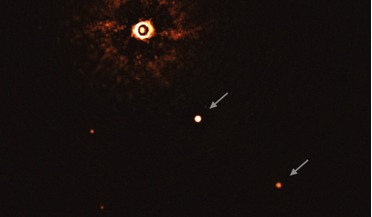 22 July 2020
Astronomers capture the first ever image of a multi-planet system around a Sun-like star
22 July 2020
Astronomers capture the first ever image of a multi-planet system around a Sun-like star
...team has now been able to take the first image of two gas giant companions that are orbiting a young, solar analogue,” says Maddalena Reggiani,... these planets from the background stars. The two gas giants orbit their host star at distances of 160 and...
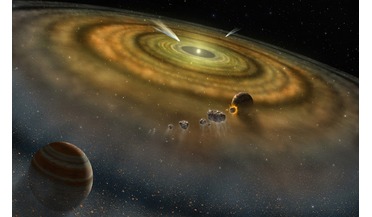 27 August 2018
Meteorites give clues as to how Jupiter was built
27 August 2018
Meteorites give clues as to how Jupiter was built
... another by the very thing that would eventually eat up a lot of the disk; Jupiter. Firstly, the formidable gas giant accumulated enough material in the shape of small pebble-sized solids to reach 20 Earth masses within one million...
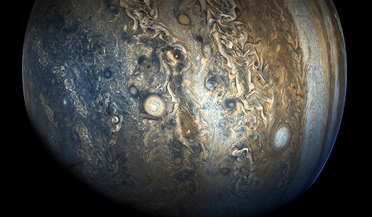 09 March 2018
Juno gives insight into Jupiter's epic winds
09 March 2018
Juno gives insight into Jupiter's epic winds
... a measurable gravitational signal. This was confirmed by measurements taken with Juno after the spacecraft arrived at the gas giant. The calculations also show that Jupiter's atmosphere makes up 1% of its total mass. Although this doesn’t sound...
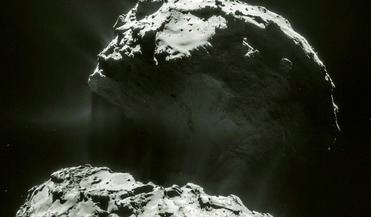 January 2020
Small body missions unveil interplanetary secrets
January 2020
Small body missions unveil interplanetary secrets
...system formation; delivery of life-elements to the planets; giant planet migration; processes in an evolving solar system; hazards ... the 1950s that Gerard Kuiper theorised that, beyond the gas giant planets, icy bodies should exist as a left-over from...
 January 2021
Evolution of volatiles on the Moon
January 2021
Evolution of volatiles on the Moon
...are quickly created from the accretion of protoplanets creating an epoch of giant impacts, which may have blown away most of the crust of ...They are colder than the cloud tops of the gas-giant planets, colder even than the mountains of nitrogen ice...
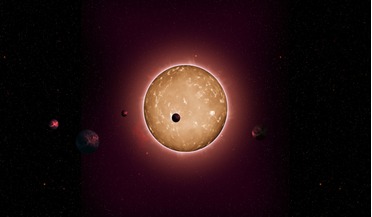 24 November 2021
Astronomers discover more than 350 possible new exoplanets
24 November 2021
Astronomers discover more than 350 possible new exoplanets
...Other notable new discoveries include EPIC 249731291, an early-type F dwarf (or sub-giant) system with two short period gas giants. It’s interesting because it’s rare to find gas giants like Saturn in our own solar system, as close to their host star...